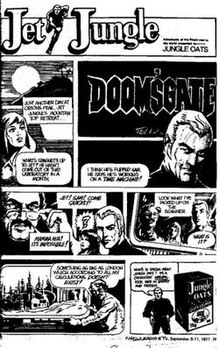Advertising spend across media platforms has diminished around the world and viewing habits have also changed significantly. Multi-screening and multiple streaming options mean that the traditional 30-second ad spot is losing its efficacy and lustre among consumers, especially at the top-end.
But one platform that seems to be gaining in acceptance and popularity is that of brand funded programming.
Whether we know it as branded content, advertiser funded programming (AFP), branded entertainment or brand funded programming (BFP), these all refer to where the advertiser pays to integrate their brand into a TV programme, rather than just buying advertising space around it. This is not a new concept and, in fact, goes back to the 1930s when big consumer brands such us P&G, Colgate and Unilever, in those days Lever Brothers, sponsored and produced daytime serial soaps on the radio.

Here is a bit of South African history for those readers who are old enough to remember Springbok Radio. This much-loved channel was on-air from 1950 to 1985 and ran numerous sponsored programmes, like Castle Playhouse, Lux Radio Theatre, Nestlé Greats, The Bride and of course Jet Jungle that was sponsored by Tiger Brands.
So, the concept of branded programming/content is not new in South Africa.
For me however, the phrase ‘branded entertainment’ is key – consumers watch programmes to be entertained or informed, they do not turn on the TV to watch ads. Viewers follow programming, whether it is a drama or a game show, because they choose to engage with it, and brands that immerse themselves in content that the consumers are watching, and do it subtly but effectively, are benefiting from high returns on investment.
With the explosion of streaming services and the plethora of TV channels available, brands are realising that traditional methods of advertising are no longer as effective as they once were, solidifying the case for sponsorship and brand immersion.

Now is also the perfect time to rethink how and where to invest brand spend – brand immersion into content should be an essential part of that consideration set. As the world starts to deal with the new normal, consumers are looking at brands differently and want more from them. Considering that we’re missing out on things we took for granted like live sports, events and concerts – at least for now – consumers are looking for new experiences.
Today’s viewers are also starting to spend again; they’re looking to go to new places and to try new products. Positioning your brand or service offering within programming that complements your brand’s ethos, will provide an ideal opportunity to refresh consumer memory structures in a relaxed and entertaining environment.
The concept of integration has truly evolved from its humble beginnings of someone simply sipping a branded beverage or a housewife showing her friends her ‘miraculous’ new washing powder.
Today, integrating brands into content is a lot more sophisticated. It takes a lot of planning and is not a quick buy.
Integration, whether it is into a storyline, game, or reality show, needs to be a part of the overall brand strategy. Remember, this integration runs for as long as the programme is flighted, and thanks to the magic of television, that can be years.
One of the biggest challenges today is finding the right partner that can help develop ideas and formats that are scalable, offer the right ROI and above all doable! Plus… the content must resonate with audiences otherwise there will be no return for either marketers or media owners.
The UK’s Channel 4 conducted a study in November last year on branded entertainment. The C4 report had some persuasive findings including that branded entertainment can boost brand perceptions by 29% vs a traditional spot advertisement; that 44% of consumers feel more positive about a brand after seeing it in a programme and six in 10 viewers feel positive about branded entertainment as an approach to advertising – appealing particularly well to younger audiences.
Having said that, lets address the issue of cost. The perception is that integration is expensive. It doesn’t have to be. If you want to own a show, sure that is expensive because you must cover all costs. Involvement with an existing or format show is more affordable, plus you have the added benefit of being able to use content from the show on your own social platforms as well as becoming a part of the overall social strategy.
Integration is so much more today; this is the reason why we say that integration should be a part of your planned brand strategy.
Although not all brands can be naturally fitted into TV content, when it works, it works exceptionally well. Plus, TV shows have longevity, they are repeated, and they are sold to other networks (like Netflix). So, brands could plan to be in a show in 2021 and then repeated in 2022 and potentially so many more times.
But the most exciting opportunities lie with the combination of TV and other media, you can stretch the campaign across many media types and the opportunities for social interaction and general reach really are endless.
The media and brand immersion space is incredibly exciting at the moment – South Africa is producing amazing content and bringing fantastic format shows from overseas that the right brands can really benefit from. It’s time to get excited about media again!

Virginia Hollis is founder of media agency, Magnetic Connection. She is a senior media strategist/director with over 35 years of experience in all aspects of media – buying, planning and strategy. Hollis has worked on a multitude of major clients across all sectors including: Coca-Cola, McDonald’s, Famous Brands, SABC, Eskom, Peugeot. She has also lectured at the AAA School in Johannesburg, helping set the syllabus and the final exam. Hollis was awarded Media Legend status by the industry’s MOST Awards in 2011 and most recently won the AdFocus Lifetime Achievement Award in 2019.














